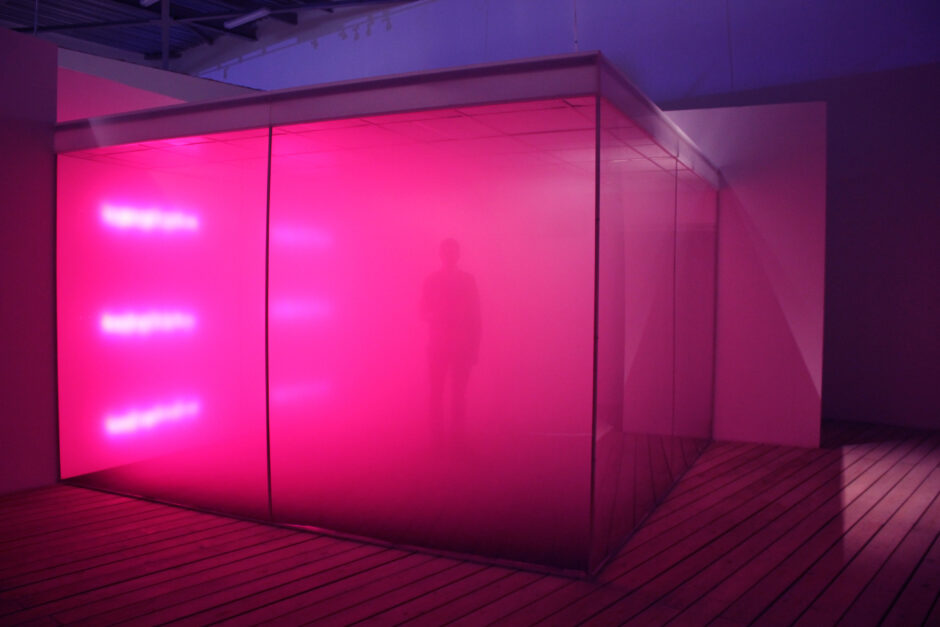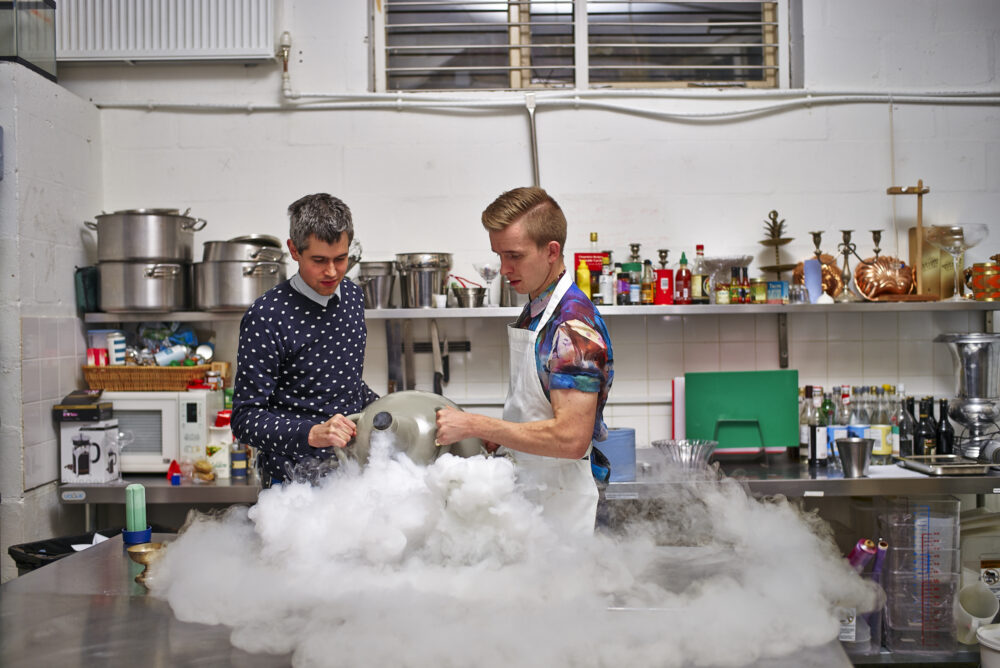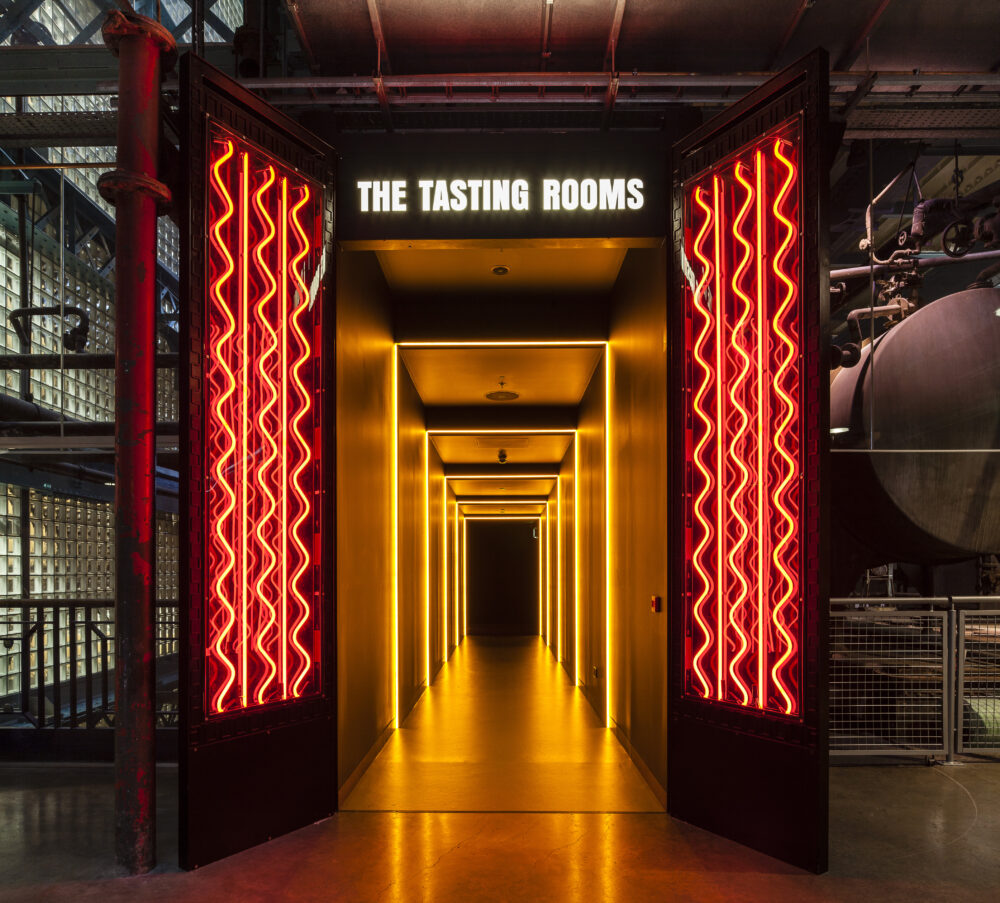FORGED IN THE CREATIVE CRUCIBLE:
WHY IS BRITAIN SO BLOODY GOOD AT EXPERIENTIAL DESIGN?
‘Humankind cannot bear very much reality’ T.S. Eliot
Britain, once the swashbuckling island of booze, fags, mags, monarchy and Shakespeare is now the leading exponent of experiential design. The work of the likes of Secret Cinema, Marshmallow Laser Feast and Moment Factory sits far beyond the bounds of theatre, music, museums or creative technology engulfing you in tangible, navigable worlds. The memories forged and stories articulated become tales you will tell others for years to come. These experiences are currently being delivered around the world and if you haven’t already, you’ll be able to gorge on them soon.
But what is experiential design – recently I sat on three panels, and each had a dramatically different take on the matter. For one it was about mastery of poly-sensory design geared to stimulate each sense. This is, of course, total rubbish – the room you are in is a multi-sensory experience! Even less inspiringly, some digital marketeers thought it meant interactive, dynamic banner ads. Puke. The third had the most effective approach that encompassed storytelling as the secret ingredient. The definition was more open too; ‘hard to define but you know it when you feel it.’ There’s a textural and emotive component with true experiential design.
So why did an island of codgers, scallywags, wastrels and rascals become leaders in this delightful medium? With experiential design so hard to define, I thought the most effective way to get to the root of Britain’s success would be to canvass to the leading practitioners (and some of our creative heroes). I tracked down three of the foremost experiential provocateurs, each with a different approach. Here’s how they explained the matter:
Maximo Recio, Lead Designer of United Visual Artists attributes the magic to cross-cultural pollination:
“Like any other design discipline, experiential design relies on socio-cultural factors and rational layers of meaning. However, at its very core, there is a strong sensorial element that resonates with us at a very fundamental level. Britain is, and has always been, a crossroads of many different cultures and languages, which I believe fosters a certain sensitivity for this kind of shared, deep-rooted forms of communication.”
Colin Nightingale, Creative Producer of Punchdrunk sees it like this:
“For years the UK has been at the centre of so much of the best in live music, club culture, festivals, theatre, dance, literature, art and design. With so much rich inspiration and a natural desire to innovate, it’s not surprising that over recent years, so many British creatives have been leading the charge to combine different strands of artistic expression. Culture has become more valued and part of the national identity. There is a restless energy to push the boundaries of what Art and Entertainment can be in the 21st century, resulting in remarkable experiential projects being exported to the rest of the world.”
James Seager, Creative Director of Les Enfants Terribles shares his insights:
‘Britain has always been at the forefront of theatre and performance which has inevitably led to innovation and an ability to push creatives into working in different exciting ways whether that be outdoor experiences, large scale events or indeed immersive. It has ultimately helped in that there is an abundance of talent in the UK raised by experimentation, questioning the ‘norm’ and a genuine desire to explore what can be achieved. The training and ability to work in these areas have also never been more accessible and exciting.’
For myself, three other crucial factors come into play. The first is the British tradition of masquerade and carnival. From Inigo Jones designed courtly masques at Banqueting House under the patronage of James I’s consort Queen Anne (when the proscenium arch was introduced to British Theatre) to Notting Hill Carnival, the world’s second-biggest street party, there’s a tradition of dressing up, play, innovation, technology and cross-cultural engagement.
Rather more pragmatically, there’s the just the right availability of space to forge this form of entertainment. The UK has enough space for larger shows, but you are under a certain amount of commercial pressure. There’s a need to deliver something so remarkable that a significant sized audience is willing to travel and pay for their pleasures.
Finally, there’s the temperate, largely gentle weather. Moderation means that it’s neither too hot nor cold to enjoy an experience in found spaces, rarely reliant on heating or aircon to be tolerable. That said, it’s not gentle enough to spend the entire year outdoors. The demand for compelling indoor entertainment supplies the audiences required for a remarkable business.
Brace yourself. All those outfits outlined above are bringing their approach to experiential design to Asia with recent or forthcoming shows. The new retail and commercial landscapes that will emerge post-Covid will be ever more reliant on experiences to drive footfall. Here’s to compelling lived experiences once again.
Sam Bompas
Sam Bompas is the co-founder of Bompas & Parr, a creative studio recognised as leading experts in polysensory experience design. The studio works with brands, artistic institutions, and governments to deliver emotionally compelling experiences around the world. The studio launched its first international studio in Hong Kong in 2020.










